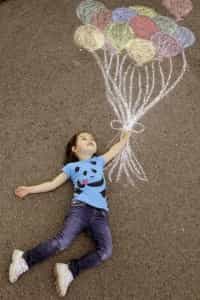Play Therapy

Toys are children's words and play is their language
Children do not have the same ability than adults to express their emotions and experiences, due to their cognitive and language development. If you ask a three year old boy what he is feeling and why, he will probably answer you that he doesn't know, or at best that he is mad or glad. He will also not be able to give an explanation for his emotions, but he will however, be able to give you a glimpse of his inner world through his play activities, as toys are children's words and play their language. It is for this reason that play therapy is used with children, instead of the talking therapies used with adolescents and adults. Play therapy is a non-threatening and safe way for children to work through and process their experiences.
Play therapy differs from regular play activities. Here the child has the opportunity to express and address their problems through play, with the help of the therapist who provides interpretive information for the child to help them come to a different understanding of their experience.
According to the Association for Play Therapy (APT) in the USA, a definition of play therapy is that it is the systematic use of a theoretical model in psychology to establish an interpersonal process wherein trained psychologists/play therapists use the therapeutic powers of play to help children prevent or resolve psycho-social difficulties and achieve optimal growth and development.
There are many conditions that play therapy can assist with, namely:
- Bereavement
- Divorce
- Attention-deficit-hyperactivity-disorder (ADHD)
- Bed-wetting
- Soiling
- Separation anxiety
- Fears and phobias
- Bullying
- Low self-esteem
- Lying and stealing
- Crying spells
- Anger outbursts
- Social skills
- Traumatic experiences

With non-directive play therapy, the child is in control of her own therapeutic process, and chooses the toys that she wants to play with, and also how she wants to play with it. Here the therapist has unconditional positive regard for the child's emotions and expression of experiences, and the focus is on the therapeutic relationship as part of the healing process. A therapeutic modality that falls in this category, is Child Centered Play Therapy, originally developed by Virginia Axline. Sanplay therapy is also non-directive in nature and is based on the Jungian theory of psychology.